October 2, 2011 at 7:33 pm
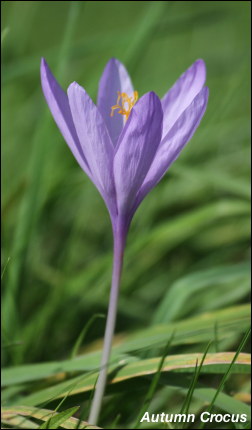 At long last five days of constant sunshine with a maximum temperature of 27°C which is a local record for the 1st October.
At long last five days of constant sunshine with a maximum temperature of 27°C which is a local record for the 1st October.
There has been a massive increase in the number of butterflies with nine Commas,seven Small Tortoiseshell, three Speckled Woods, three Red Admiral and two Small Copper on Hopwood but strangely enough no Peacock Butterflies yet. Autumn Crocus have flowered well and the first migrant Snipe were feeding along the stream on the 1st. As would have been expected all the Swallows and Martins have now moved South in the exceptional weather.
Flying over the garden one day were three Kestrels, all heading South and only yards apart. Were they a family party on the move? Totally confused by the weather was a Chiff Chaff in full song on the 29th September!
Last Sunday was a sad day for wildlife photography with the passing of Gordon Langsbury. I had been speaking to him only two days before his death and as always he was enthusiastic about his next book on Hebridean Wildlife. A month earlier I had helped him arrange a cruise around Spitsbergen to celebrate his 80th birthday. He will now be there in spirit only next year.
September 25, 2011 at 12:29 pm
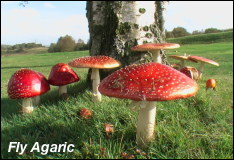 There is little doubt that September is the best month of the year for fungi. On Hopwood this week there have been the best examples of Fly Agaric that I have ever seen. Also present this week there has been a continual passage of Swallows and House Martins with more Siskins arriving all the time. After an apparent absence during the Summer a Green Woodpecker was present on the 22nd. It was also pleasing to note a Roe Deer fawn which is the first proof of breeding of Roe Deer on Hopwood.
There is little doubt that September is the best month of the year for fungi. On Hopwood this week there have been the best examples of Fly Agaric that I have ever seen. Also present this week there has been a continual passage of Swallows and House Martins with more Siskins arriving all the time. After an apparent absence during the Summer a Green Woodpecker was present on the 22nd. It was also pleasing to note a Roe Deer fawn which is the first proof of breeding of Roe Deer on Hopwood.
In the garden we have put some fat balls out this week which attracted thirteen House Sparrows one day plus a male Great Spotted Woodpecker. Unfortunately the male Sparrowhawk struck on 25th and was seen to fly off with prey so he continues to hunt through the garden.
A seven mile walk around the mature woods of Dunham Massey produced a Green Woodpecker and charm of up to forty Goldfinches. Nuthatches were everywhere and there was much evidence of overnight Badger activity.
September 17, 2011 at 8:09 pm
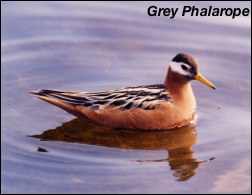 On the 12th I received word that the gale had blown a Grey Phalarope inland to Ashworth Moor reservoir on Owd Betts. As I didn’t think I would be able to obtain any film of the bird in the strong wind I decided to wait until first light on the 13th when, in calmer conditions, I might have a better chance of holding the camera steady. It was, of course, a big mistake as the Phalarope flew off at first light and I was left with just a Common Sandpiper and a Charm of thirty Goldfinches for company. So this week’s photo is one I took earlier, much earlier in fact in Spitsbergen when it was in full Summer plumage and completely different to the one this week at Owd Betts. The last Grey Phalarope seen in Rochdale was seen in 1899 so I may have to wait a long time to see the next one!
On the 12th I received word that the gale had blown a Grey Phalarope inland to Ashworth Moor reservoir on Owd Betts. As I didn’t think I would be able to obtain any film of the bird in the strong wind I decided to wait until first light on the 13th when, in calmer conditions, I might have a better chance of holding the camera steady. It was, of course, a big mistake as the Phalarope flew off at first light and I was left with just a Common Sandpiper and a Charm of thirty Goldfinches for company. So this week’s photo is one I took earlier, much earlier in fact in Spitsbergen when it was in full Summer plumage and completely different to the one this week at Owd Betts. The last Grey Phalarope seen in Rochdale was seen in 1899 so I may have to wait a long time to see the next one!
On Hopwood on the 16th forty Swallows were feeding and resting on one of the fairways. Along Trub Brook was a mixed Swallow / House Martin flock of a hundred birds feeding on insects in the shelter out of the wind.
September 10, 2011 at 9:37 pm
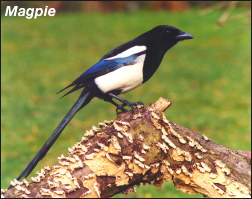 Despite the fact that no food is now being placed in the garden we had a record four Magpies together on one day. Coal Tits and Wren have also been seen but sadly a Collared Dove has died of the disease this week so it looks like it is going to take some time to clear.
Despite the fact that no food is now being placed in the garden we had a record four Magpies together on one day. Coal Tits and Wren have also been seen but sadly a Collared Dove has died of the disease this week so it looks like it is going to take some time to clear.
On Hopwood a party of sixteen Long Tailed Tits was encountered and a Chiffchaff was still singing. The only sun of the week was on the ninth producing three Small Tortoiseshell butterflies and one Speckled Wood
September is always my quietest time of the year for filming so my attentions have now turned to the new DVD which will be on Raptors. Sixty hours have already been spent on viewing tapes , writing the script and downloading the sequences. The DVD will hopefully be finished by November and will include an in depth look at sixteen species of Raptor filmed in the Pennines, Cairngorms and the Hebrides.
September 3, 2011 at 7:51 pm
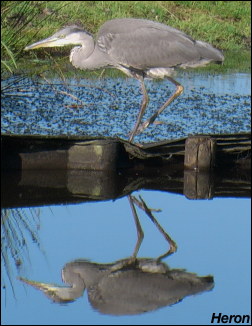
This week's photo is of a Heron that I filmed on the Rochdale Canal in Castleton. Normally Herons can be wary birds but this one would tolerate being looked at from across the canal. It was the best day of the week weather wise and the Heron produced some good reflections as it patiently hunted the canal verge.
Whilst I was at Thornham Cricket Club this week I noticed good numbers of House Sparrows dust bathing and feeding in an area of gravel. A quick count indicated at least fifty four present which is the largest number I have seen locally for some time.
With no food going into the garden there is nothing to repost except that the male Sparrowhawk still comes but only a couple of times a day and of course leaves empty handed. A Wren was present one day and a Speckled Wood Butterfly.
On Hopwood charms of twenty plus Goldfinches are present and young Swallows are still in a nest in the golf club buggy shed. A Whitethroat was giving alarm calls so may still have a second brood.
August 28, 2011 at 6:05 pm
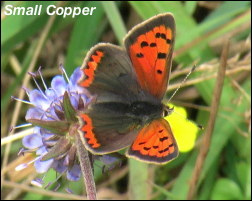
The entries for the last two weeks about the record numbers of birds in the garden all pale into insignificance with the outbreak of Trichomonosis amongst the finches. The last straw came with both male and female Bullfinch becoming infected and I was able to pick up the female to save it from being taken by the male Sparrowhawk who is still catching two to three, mainly sick birds, each day. So after forty three years of feeding birds in the garden we stopped putting food out to hope the disease and the Sparrowhawk go away.It was a hard decision to make and the Wood Pigeons still cannot understand why there is no food for them!
The calm and sometimes warm weather last week has been perfect for butterflies and I finally made my way to Norden in search of the elusive Purple Hairstreak. Many Oak trees were scanned but all to no avail, only an abundance of Speckled Woods and Small Coppers, with the odd Comma and Peacock enjoying the conditions.
The big news on Hopwood was that alarm calls from feeding Swallows produced a fast flying Hobby – my first sighting this year. It was gone in a second and with no camera to hand it still remains my most elusive raptor to capture on film. Last week two Peregrines were on the course with one being a juvenile, perhaps spreading out from Rochdale Town Hall.
 At long last five days of constant sunshine with a maximum temperature of 27°C which is a local record for the 1st October.
At long last five days of constant sunshine with a maximum temperature of 27°C which is a local record for the 1st October.

 There is little doubt that September is the best month of the year for fungi. On Hopwood this week there have been the best examples of Fly Agaric that I have ever seen. Also present this week there has been a continual passage of Swallows and House Martins with more Siskins arriving all the time. After an apparent absence during the Summer a Green Woodpecker was present on the 22nd. It was also pleasing to note a Roe Deer fawn which is the first proof of breeding of Roe Deer on Hopwood.
There is little doubt that September is the best month of the year for fungi. On Hopwood this week there have been the best examples of Fly Agaric that I have ever seen. Also present this week there has been a continual passage of Swallows and House Martins with more Siskins arriving all the time. After an apparent absence during the Summer a Green Woodpecker was present on the 22nd. It was also pleasing to note a Roe Deer fawn which is the first proof of breeding of Roe Deer on Hopwood. On the 12th I received word that the gale had blown a Grey Phalarope inland to Ashworth Moor reservoir on Owd Betts. As I didn’t think I would be able to obtain any film of the bird in the strong wind I decided to wait until first light on the 13th when, in calmer conditions, I might have a better chance of holding the camera steady. It was, of course, a big mistake as the Phalarope flew off at first light and I was left with just a Common Sandpiper and a Charm of thirty Goldfinches for company. So this week’s photo is one I took earlier, much earlier in fact in Spitsbergen when it was in full Summer plumage and completely different to the one this week at Owd Betts. The last Grey Phalarope seen in Rochdale was seen in 1899 so I may have to wait a long time to see the next one!
On the 12th I received word that the gale had blown a Grey Phalarope inland to Ashworth Moor reservoir on Owd Betts. As I didn’t think I would be able to obtain any film of the bird in the strong wind I decided to wait until first light on the 13th when, in calmer conditions, I might have a better chance of holding the camera steady. It was, of course, a big mistake as the Phalarope flew off at first light and I was left with just a Common Sandpiper and a Charm of thirty Goldfinches for company. So this week’s photo is one I took earlier, much earlier in fact in Spitsbergen when it was in full Summer plumage and completely different to the one this week at Owd Betts. The last Grey Phalarope seen in Rochdale was seen in 1899 so I may have to wait a long time to see the next one! Despite the fact that no food is now being placed in the garden we had a record four Magpies together on one day. Coal Tits and Wren have also been seen but sadly a Collared Dove has died of the disease this week so it looks like it is going to take some time to clear.
Despite the fact that no food is now being placed in the garden we had a record four Magpies together on one day. Coal Tits and Wren have also been seen but sadly a Collared Dove has died of the disease this week so it looks like it is going to take some time to clear.
